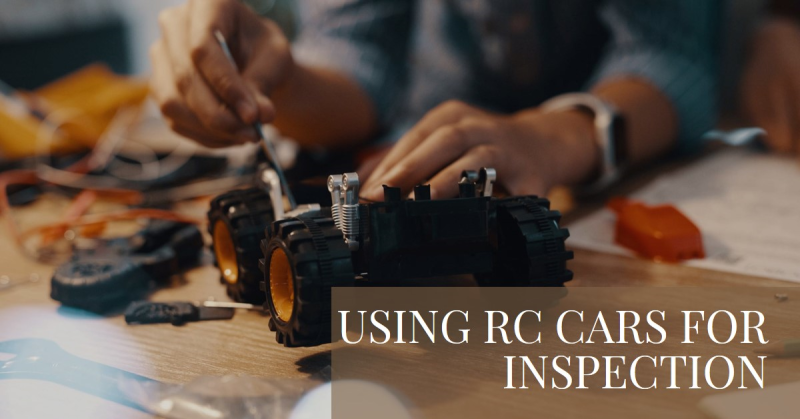Crawl spaces, the low clearance areas beneath houses and buildings, often require inspection for pests, mold, structural issues, and more. Traditionally, these cramped areas are difficult for humans to access. However, remote-controlled (RC) cars provide an ideal way to inspect and navigate crawl spaces efficiently in 2024 and beyond.
Overview of Crawl Space Inspections
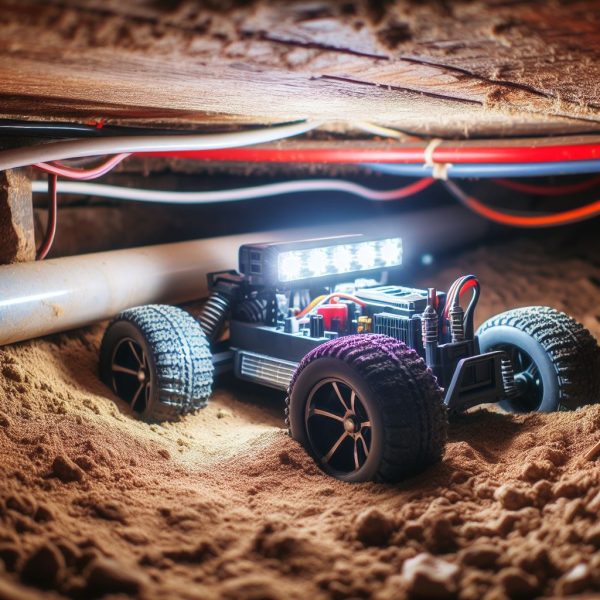
Crawl spaces need regular inspection for multiple reasons:
- Pest Control: Termites, ants, rodents, and wildlife can nest in crawl spaces, damaging insulation, wood structures, and HVAC systems. Inspections help identify pest infestations for treatment.
- Mold Prevention: Damp, humid crawl spaces foster mold growth on wood and other surfaces, contributing to poor indoor air quality. Inspections locate moisture intrusion issues.
- Structural Issues: Over time, foundation supports, pipes, and ductwork under houses can crack and fail. Inspections identify weaknesses before extensive repairs are needed.
- HVAC Maintenance: Crawl spaces contain ductwork, wiring, and vents that require cleaning and upkeep. Access is needed to service these HVAC components periodically.
Challenges of Traditional Crawl Space Inspections
It is difficult for human inspectors to thoroughly examine crawl spaces due to:
- Restricted Access: Crawl spaces have very low clearance, often less than 3 feet. It is uncomfortable and difficult to maneuver in these tight spaces.
- Poor Lighting: Natural light is minimal and flashlights provide limited lighting for visual inspections. Poor visibility obscures potential issues.
- Difficult Navigation: Rocky, muddy, or flooded terrain under houses makes navigation arduous. Tight spaces limit movement as well.
Benefits of Using RC Cars for Inspections
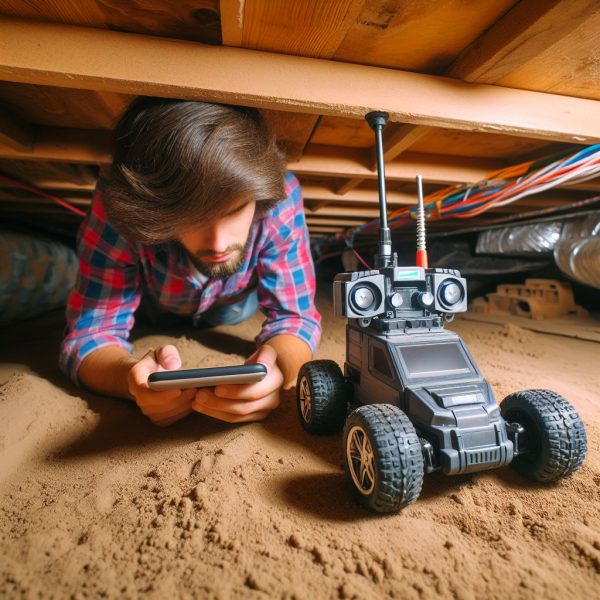
RC cars provide several advantages for completing crawl space inspections versus traditional methods:
- Maneuverability: RC cars can easily access cramped areas and rough terrain that is difficult or impossible for people to traverse.
- Enhanced Visibility: Onboard cameras with built-in LED lighting provide clear video footage and images in dark crawl spaces.
- Comprehensive Coverage: RC cars thoroughly inspect the entire area efficiently, minimizing overlooked issues.
- Safer Access: Operators can inspect crawl spaces remotely without physical risks of entering confined spaces.
- Cost Effectiveness: RC inspection is less labor intensive than deploying human inspectors in crawl spaces.
RC Car Crawlers Design and Features for Inspections
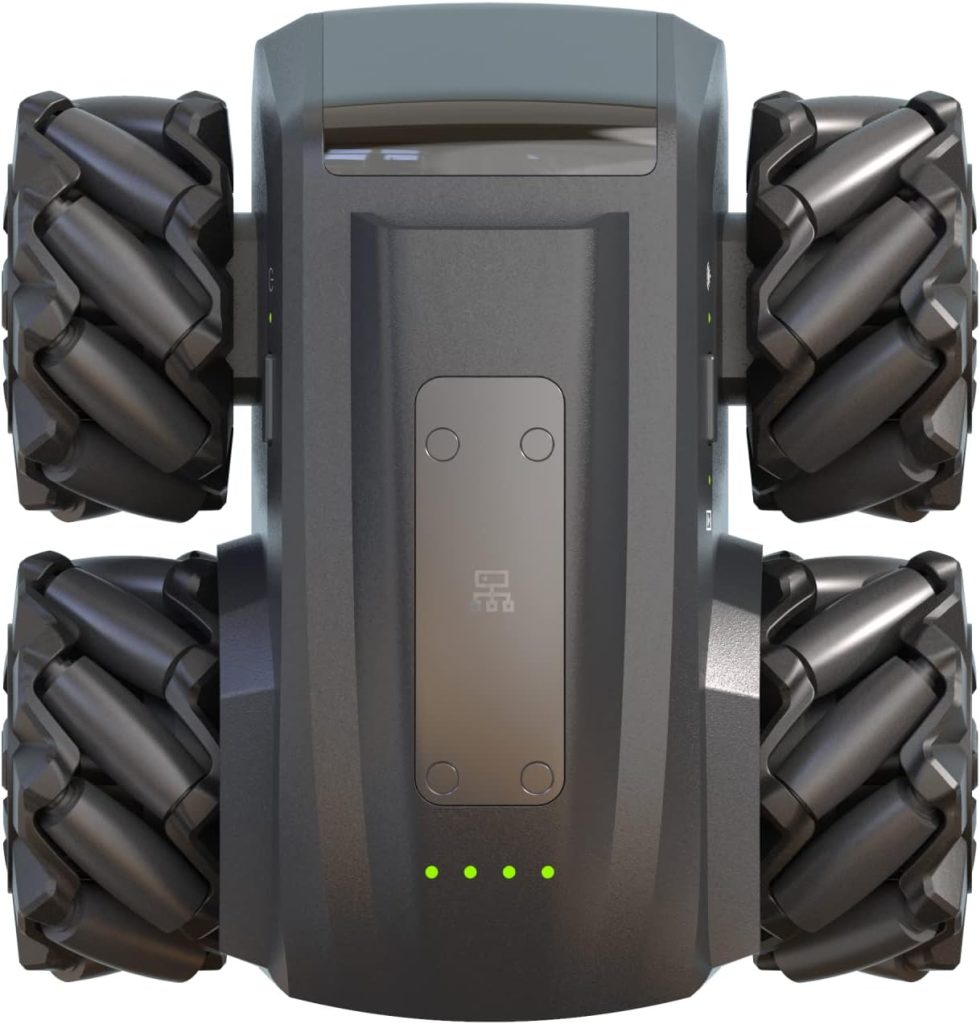
Specialty RC cars, called “crawlers”, are optimized for crawl space use with features including:
- All-Terrain Wheels/Tracks: Powerful motors and grippy tires or tracks provide traction on dirt, rocks, mud and slopes.
- Flexible Chassis: Articulated bodies and frames bend to maneuver tight turns and obstacles.
- Waterproof Components: Waterproofing allows operation in damp, flooded spaces without short circuiting.
- High-Torque Servos: Strong motors precisely control speed and steering for smooth crawling maneuvers.
- High Ground Clearance: Chassis raised up allows clearing rocks, pipes and other obstructions.
- Bright LED Lights: Built-in LED arrays illuminate dark crawl space areas for video recording.
- Onboard Camera: Real-time video with remote monitor allows inspecting tight spaces.
Image Recognition Integration
In 2024 and beyond, RC crawlers will integrate advanced image recognition and AI to automatically detect flaws during inspections:
- Identify structural cracks, wood rot and corroded metal through pattern recognition.
- Detect pest nests, mold growth and moisture intrusion using visual classifiers.
- Analyze images and flag abnormalities without human oversight.
- Provide inspectors with instant push notifications for critical issues.
Conducting RC Inspections Step-By-Step
RC crawler inspections involve systematic preparations and procedures:
Pre-Inspection Planning
- Review crawl space size, entry points, terrain and accessibility issues.
- Select an appropriate RC crawler with capabilities to handle the space.
- Have proper lighting equipment if crawler lacks headlights.
- Prepare maps/schematics of the space for documentation.
- Set inspection goals and checklist of items to scrutinize.
Staging and Entry
- Place crawler at main crawl space entry point.
- Remove any debris/obstructions blocking entry.
- Run initial radio link test to ensure connected control.
- Carefully lower/drive crawler into entry point avoiding hazards.
Methodical Inspection
- Navigate in organized search pattern to cover entire space systematically.
- Adjust speed for conditions – slower on rough terrain or when inspecting an area closely.
- Operate lights, camera and other features as needed for visibility.
- Stop for closer inspection when potential issues are spotted.
Thorough Documentation
- Record date-stamped video/photos and take notes for later reference.
- Mark inspector location and issues on schematic map.
- Label areas and items requiring follow-up inspection or repairs.
- Document environmental conditions (flooding, slope stability, etc.)
Safe Exit and Follow-Up
- After full inspection, return crawler to entry point.
- Carefully retrieve crawler avoid jostling or dropping.
- Review recordings and create inspection report detailing findings.
- Schedule any required repairs or a follow up inspection if needed.
Selecting an RC Crawler for Professional Inspections
Choosing the right RC crawler for inspections comes down to:
Vehicle Type: Wheeled, tracked or legged crawler based on the terrain. Tracked is optimal for most crawl spaces.
Vehicle Size: Length and width must fit through tight spaces. Smaller 1/10 scale crawlers are ideal in most cases.
Ground Clearance: At least 4 inches of clearance for navigating uneven terrain and obstructions.
Inspected Weight Capacity: Large enough to handle camera, lights, batteries and other payload. 5-10 pound capacity typical.
Top Speed: 5-10 mph is reasonable for careful visual inspection. High top speeds are unnecessary.
Battery Life: 1-2 hours minimum for full crawl space inspection on a charge. Spare batteries helpful.
Camera Resolution: HD 1080p or better. High resolution allows inspecting fine details.
Camera Field of View: Wide 120°+ FOV captures more area. Narrow FOV misses periphery issues.
Lights: Bright integral LEDs for illuminating dark spaces, or mounts for external lighting.
Ruggedness: Durable waterproof chassis and components withstand dirt, mud and scrapes. Easily repairable.
Controllability: Precise, responsive speed and steering for navigating tight spaces.
Recommended Inspection RC Crawler Models
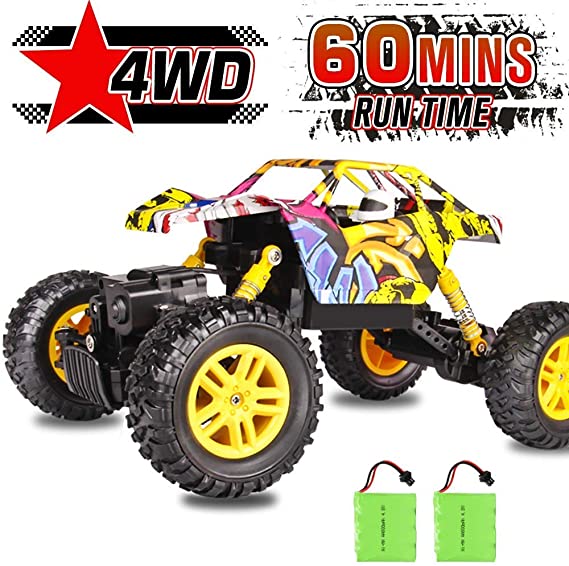
Based on the criteria above, recommended crawler models for inspection include:
- Traxxas TRX-4: 1/10 scale RC with remote locking differentials excels off-road.
- Redcat Everest Gen7: Affordable 1/10 crawler with ample traction and 20+ mph top speed.
- Axial SCX10: Popular 1/10 off-roader with huge customization and accessory options.
- Vaterra Ascender: Light 1/10 crawler with waterproof electronics and geared transmission.
- RC4WD Trail Finder 2: Steel chassis 1/12 kit with meticulous scale details for realism.
For large commercial spaces, 1/8 scale models offer longer runtimes and larger payload capacity for multi-camera rigs. The Traxxas TRX-6 and Arrma Mojave are top large-scale choices.
Key Crawlers Features for Inspections
When selecting an RC inspection crawler, prioritize models with:
- All-terrain tires & treads – For traction on any surface
- 4-wheel drive – Grips better on loose materials
- Waterproofing – Essential for wet environments
- High ground clearance – Surmounts crawling obstacles
- Removable body – Allows custom camera & lighting rigs
- Rugged components – Durable for harsh conditions
- Long battery life – For extended inspection times
- High-resolution camera – Details small damage and flaws
- Adjustable camera angle – Inspects up close and at a distance
- Bright LED lighting – Illuminates dark spaces clearly
- Slow precise speed control – For careful visual analysis
- Excellent maneuverability – Turns sharply and navigates tight spaces
Modifying and Customizing Inspection RC Crawlers
For professional inspections, RC crawlers benefit from customization and modifications:
- Aftermarket tires – More aggressive treads for traction in mud or gravel
- Chassis protection – Guards and skidplates prevent component damage
- Extended wheelbase – For stability climbing over large objects
- 2 speed transmission – Provides low speeds for technical sections
- Larger battery – Extends running time for longer inspections
- External battery tray – Balances weight distribution for climbing
- Motor heatsink – Manages heat on long inspection runs
- Waterproof servo – Prevents failures in damp conditions
- High torque servo – Optimizes low-speed crawl control
- Aftermarket links – Provides greater suspension articulation
- Higher ride height – Increases ground clearance over obstacles
- Underbody protection – Guards sensitive components
- Light bars – Additional LEDs for bright illumination
- Inspection camera gimbal – Stabilizes and pans the camera
Camera Upgrade Options
Choosing the right camera for inspections is crucial. Options include:
- HD digital camera – Records crawl space details clearly
- Pan/tilt camera – Remotely views different angles
- Infrared camera – Enhances views in total darkness
- WiFi camera – Streams live video to mobile devices
- VR camera – Provides immersive first-person view
- Thermal camera – Detects moisture and insulation issues
- 360° camera – Comprehensive situational awareness
- Gas detection camera – Identifies leaks and air quality issues
Image Recognition and Sensor Upgrades
Advanced sensors can automatically detect flaws during inspections:
- Machine vision – Identifies structural defects using visual pattern recognition
- 3D mapping sensors – Generate detailed crawl space maps and measurements
- IMU sensors – Records crawler orientation, vibration and collisions
- Gas sensors – Detects dangerous VOCs and methane levels
- Moisture sensors – Locates water intrusions and leaks
- Infrared sensors – Scans for heat loss around ductwork
- ULTRASONIC sensors – Provides proximity awareness to avoid obstacles
Ensuring Thorough Inspections with RC Crawlers
Thoroughly inspecting complex crawl spaces with an RC crawler requires:
- Methodical Search Pattern – Navigating the space in an organized grid ensures full visual coverage.
- Slow Precise Movement – Cautious crawling speed allows carefully analyzing areas.
- Close-Up Inspection – Use the camera zoom and position crawler near items for detailed inspection.
- Redundancy – Re-covering areas from multiple angles provides added assurance.
- Lighting Adjustment – Cycle through different light modes for best visibility.
- Follow Up – Re-inspect suspicious areas more closely and document issues.
- Imagery Review – Double check photos and videos to ensure no problems were missed initially.
Key Advantages of RC Inspections
RC crawlers offer many benefits for crawl space inspection versus traditional methods:
- Better Access – Easily navigate cramped spaces human inspectors cannot fit in
- Enhanced Visibility – Onboard cameras and lights illuminate dark areas
- More Thorough – Methodically cover every inch of tight spaces
- Safety – Remove risks associated with confined space entry
- Cost Savings – Reduce labor expenses without multiple human inspectors
- Precise Documentation – Videos provide detailed visual records of issues
- Easy Repetition – Simpler to conduct follow-up inspections after repairs
- Efficient Analysis – Instantly review HD image feeds
- Versatility – Modified for thermal, gas, and other specialized sensor inspection
- Durability – Crawl over tough terrain and in wet conditions with less damage
Key Disadvantages & Limitations
Despite major benefits, RC inspection crawlers have some downsides:
- Higher Upfront Costs – Crawler, video gear and sensors represent a significant investment
- Steep Learning Curve – Piloting complex crawlers takes training and practice
- Line-of-Sight Issues – Radio can lose connection in tight spaces or dense materials
- Limited Autonomy – Still requires human piloting and oversight
- Harsher Conditions – Water, mud, and debris can damage sensitive equipment
- Power Constraints – Runtimes limited by battery size and recharge time
- Payload Limitations – Small vehicles restrict sensor and accessory payloads
- Confined Maneuvering – Tight spaces still constrain crawler mobility
Overcoming Challenges of RC Inspection
Several strategies help overcome common RC challenges:
- Pilot Training – Practice crawler operation to gain experience navigating tight spaces.
- Tethered Control – Run a physical tether for positive radio control and crawler recovery.
- Frequent Communication Checks – Confirm radio link integrity as inspection proceeds.
- Ruggedizing Electronics – Using waterproofing and guards improves durability.
- Bringing Spare Batteries – Carry charged spares to extend inspection times.
- Using Bigger Vehicles – Larger 1/8 scale crawlers handle heavier payloads.
- Following Safety Protocols – Pre-inspection planning and hazard avoidance prevent accidents.
The Future of RC Crawlers for Inspection
Emerging technologies will expand RC capabilities:
- Autonomous Inspection – Crawlers navigate and inspect independently without human control
- LiDAR Mapping – Create detailed 3D maps of crawl spaces autonomously
- Swarm Inspections – Teams of small collaborating crawler robots cover space faster
- Snakes – snake arms unfold to inspect narrow gaps inaccessible to crawlers
- Drones – Aerial drones complement ground-based crawling inspection
- Self-Charging – Crawlers wirelessly charge onboard batteries to operate continuously
- Advanced Sensors – Miniaturized sensors enable extensive environmental, structural, and gas monitoring
- Robotic Repairs – Crawlers equipped with tools to fix defects like leaks autonomously
- Teleoperation – Operators controlling crawlers remotely through virtual reality environments
Conclusion
RC inspection crawlers enable thorough examination of confined crawl spaces too dangerous or inaccessible for direct human inspection. When selecting an appropriate crawler, key considerations include size, ground clearance, durability, camera quality, and maneuverability. Modifying and customizing commercial RC vehicles improves inspection capabilities. Methodical inspection procedures and taking advantage of emerging technologies will maximize efficiency and benefits well into the future. RC crawlers bring crawl space inspection into the 21st century.
